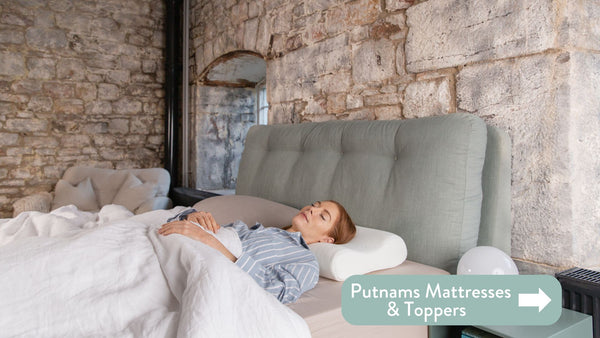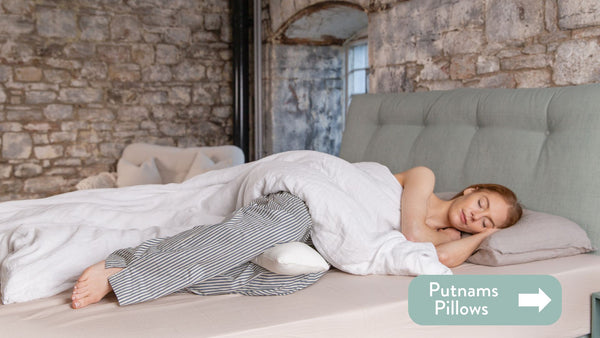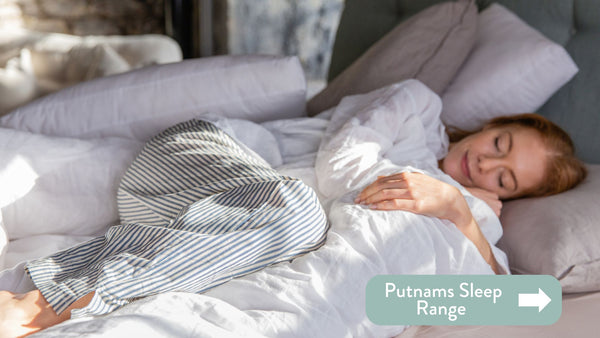
Ihr Leitfaden für gesunde Schlafgewohnheiten und das Finden Ihrer idealen Schlafposition
Guter Schlaf ist für die allgemeine Gesundheit und das Wohlbefinden unerlässlich. Ein oft übersehener Faktor für einen guten Schlaf ist die gewählte Position.
Unabhängig davon, ob Sie lieber auf dem Rücken, der Seite oder dem Bauch schlafen, kann Ihre Schlafposition einen erheblichen Einfluss auf Ihren Körper und die Qualität Ihrer Ruhe haben.
In diesem Leitfaden untersuchen wir die Vor- und Nachteile der einzelnen Schlafpositionen und helfen Ihnen dabei herauszufinden, welche für Sie am besten geeignet ist.
Schlafen auf dem Rücken
Die gesündeste Schlafposition ist oft die Rückenlage. Kopf, Nacken und Wirbelsäule liegen in einer neutralen Position, Druckstellen werden minimiert und die richtige Ausrichtung ist gewährleistet.
Dies kann Schmerzen und Steifheit lindern, insbesondere im Nacken- und unteren Rückenbereich. Auch für Menschen mit saurem Reflux kann es von Vorteil sein, auf dem Rücken zu schlafen, da der Kopf so über dem Magen liegt. Studien haben gezeigt , dass Menschen, die auf der linken Seite schlafen, am besten gegen sauren Reflux gelindert werden.
Allerdings ist das Schlafen auf dem Rücken möglicherweise nicht für jeden geeignet.
Es kann Schnarchen und Schlafapnoe-Symptome verschlimmern, da die Zunge und das weiche Gewebe im Rachen erschlaffen und die Atemwege blockieren können. Wenn Sie diese Probleme haben, sollten Sie alternative Schlafpositionen in Betracht ziehen oder einen Arzt konsultieren.
Schauen Sie sich Putnams Produktpalette gegen Schlafapnoe an, die Ihr Leben ein klein wenig einfacher machen soll.
10 % der britischen Bevölkerung im Jahr 2023 sind Rückenschläfer
Seitenschläfer
Die am weitesten verbreitete Schlafposition ist die Seitenlage. Sie kann mehrere gesundheitliche Vorteile bieten.
Wenn es richtig gemacht wird, kann das Schlafen auf der Seite mit der richtigen Kissenunterstützung helfen, die Wirbelsäule gerade zu halten und den Druck auf Hüfte und Schultern zu reduzieren. Diese Position ist besonders vorteilhaft für Menschen mit chronischen Schmerzen, da sie den Druck auf empfindliche Bereiche verringern kann.
Das Schlafen auf der linken Seite kann auch die Verdauung unterstützen und Sodbrennen lindern. Darüber hinaus wird das Schlafen auf der linken Seite während der Schwangerschaft oft empfohlen, da dies die Durchblutung des Herzens und des Fötus verbessern kann.
Seitenschläfer sollten jedoch auf die Unterstützung ihres Kissens und ihrer Matratze achten, um Nacken- und Schulterschmerzen vorzubeugen. Ein festes Kissen, das Kopf und Nacken in einer Linie mit der Wirbelsäule hält, ist entscheidend für bequemes Schlafen auf der Seite.
80 % des Vereinigten Königreichs Bevölkerung im Jahr 2023 sind Seitenschläfer
Schlafen auf dem Bauch
Obwohl die Bauchlage die am wenigsten verbreitete Schlafposition ist, finden manche Menschen sie angenehmer. Schlafen auf dem Bauch kann Schnarchen und Schlafapnoe-Symptome lindern, da die Atemwege offener bleiben.
Allerdings kann das Schlafen auf dem Bauch eine erhebliche Belastung für den Nacken und den unteren Rücken darstellen, da es die Wirbelsäule in eine unnatürliche Position zwingt. Dies kann zu Schmerzen, Steifheit und langfristigen Muskel-Skelett-Problemen führen.
Wenn Sie lieber auf dem Bauch schlafen, sollten Sie ein dünnes Kissen oder gar kein Kissen verwenden, um die Nackenbelastung zu minimieren. Sie können auch ein Kissen unter Ihre Hüften legen, um die Wirbelsäule gerade zu halten.
10 % der britischen Bevölkerung im Jahr 2023 sind Bauchschläfer
Finden Sie Ihre ideale Schlafposition
Letztendlich ist die beste Schlafposition diejenige, die Ihnen einen bequemen, erholsamen Schlaf ohne Schmerzen oder Steifheit ermöglicht. Das Ausprobieren verschiedener Positionen und kleine Anpassungen anKissen und Matratze können Ihnen dabei helfen, die ideale Schlafposition für Ihren Körper zu finden.
Wenn Sie chronische Schmerzen oder Beschwerden haben, sollten Sie unabhängig von Ihrer Schlafposition unbedingt einen Arzt aufsuchen. Er kann Ihnen helfen, die zugrunde liegenden Probleme zu identifizieren und Ihnen Ratschläge zur Verbesserung Ihrer Schlafqualität und Ihrer allgemeinen Gesundheit geben.
Denken Sie daran, dass gesunde Schlafgewohnheiten mehr als nur Ihre Schlafposition betreffen. Die Einhaltung eines gleichmäßigen Schlafrhythmus, die Schaffung einer entspannenden Schlafenszeitroutine und die Gewährleistung einer komfortablen und erholsamen Schlafumgebung sind alles entscheidende Elemente einer guten Schlafhygiene.
Wenn Sie die Vor- und Nachteile verschiedener Schlafpositionen kennen und Ihre Schlafgewohnheiten gut durchdacht haben, können Sie die nötigen Schritte in Richtung eines möglichst gesündesten und erholsamsten Schlafs unternehmen.


















Hinterlassen Sie einen Kommentar